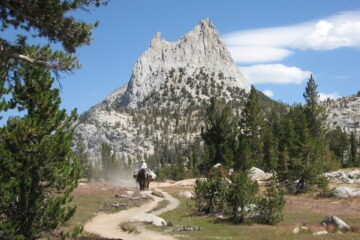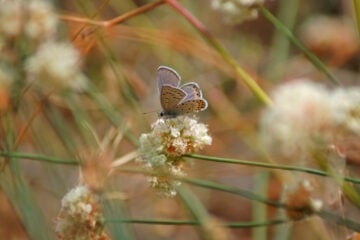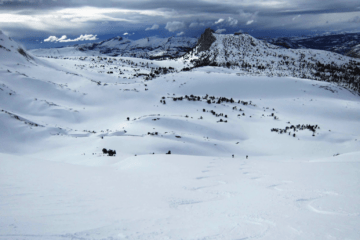This story about the complexities of scaling the El Capitan ecosystem as a researcher featured in the Spring/Summer Yosemite Conservancy magazine, and was written by Megan Orpwood-Russell.
El Capitan is one of the most iconic cliffs in the world, synonymous with human feats of daring and strength. Yosemite’s cliffs might not seem particularly hospitable, but the vertical ecosystem supports plenty of life: lichens, tree frogs, peregrine falcons, bats, and even mice. In the spring, as snowmelt trickles down the rockface of El Capitan, it provides water to a diversity of plant life, which find their homes on ledges and in nooks and crevices. In turn, they are pollinated by bees and other insects.
Conditions on El Capitan can be harsh: Bitterly cold winters give way to sweltering summers — the granite cliff is too hot to climb safely in late summer — which creates a challenging environment for life to exist. Despite the adversity, though, many species do thrive, which creates an exciting problem for researchers: How can they safely study this unique ecosystem?
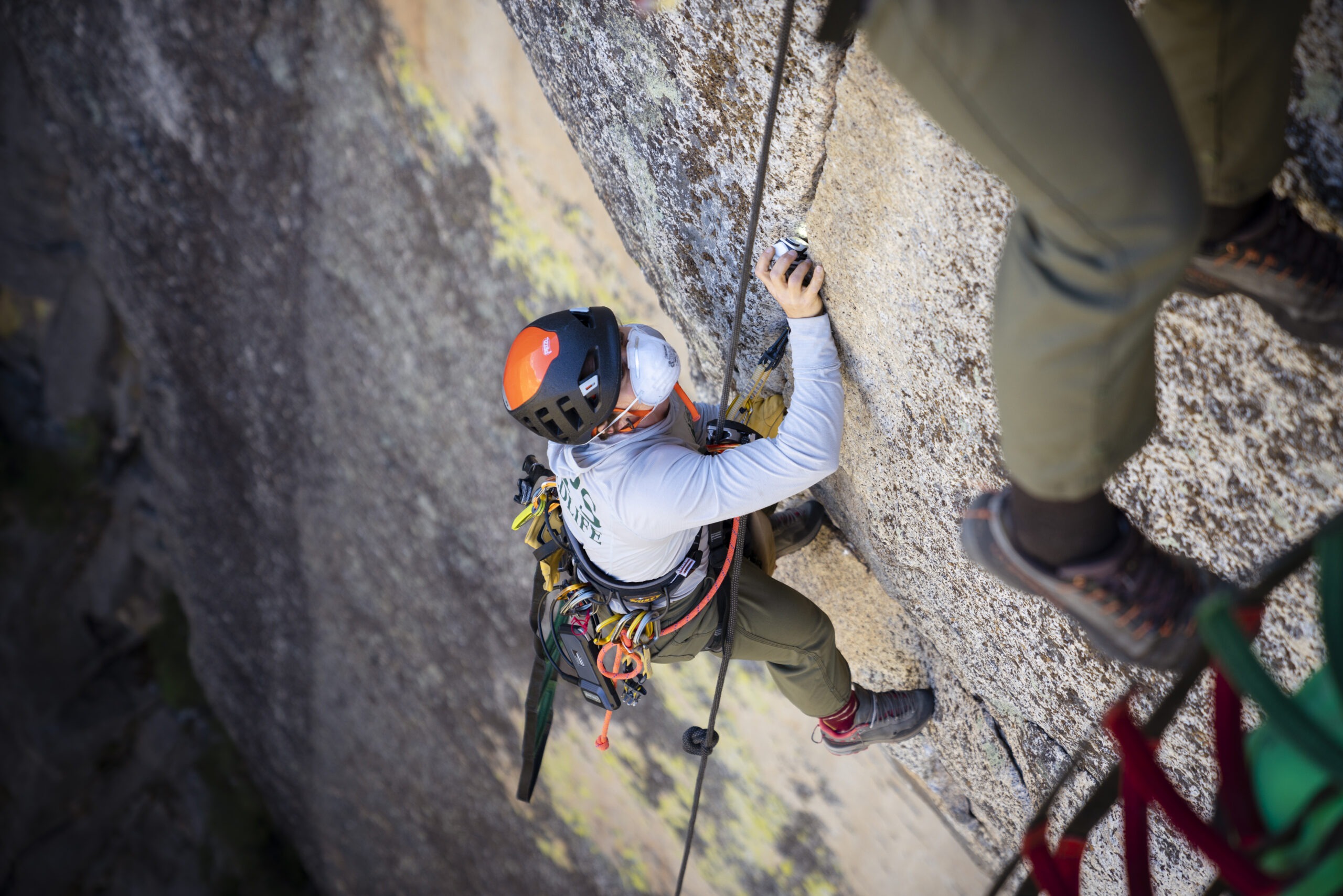
Yosemite biologists Shannon Joslin and Sean Smith scale sheer rock faces to locate a bat roost identified by a recreational climber. Photo: Miya Tsudome.
Big wall research
At a minimum, El Capitan field technicians must be skilled rock climbers. Some studies are multiday and require overnight camping on the wall to collect data. “Safety is one of my biggest concerns,” says Shannon Joslin, Yosemite’s big wall bat program manager. “It’s something I’m constantly thinking about, so I require all the technicians I hire to complete rope safety courses. We need to make sure all our time spent on the wall is well thought out and as streamlined as possible”
Sean Smith, a biological science field technician who works for Joslin, also works on peregrine falcon monitoring and management. This ensures a natural crossover among data collection that minimizes team time on El Capitan. “What is challenging about big wall research?” Smith asks. “We are not going anywhere fast, and we’re limited to where ropes are fixed and where crack systems are. If we see bat signs we want to follow up on, sometimes we can’t physically get to them and must arrange a second excursion to reach that data.”
Bats under threat
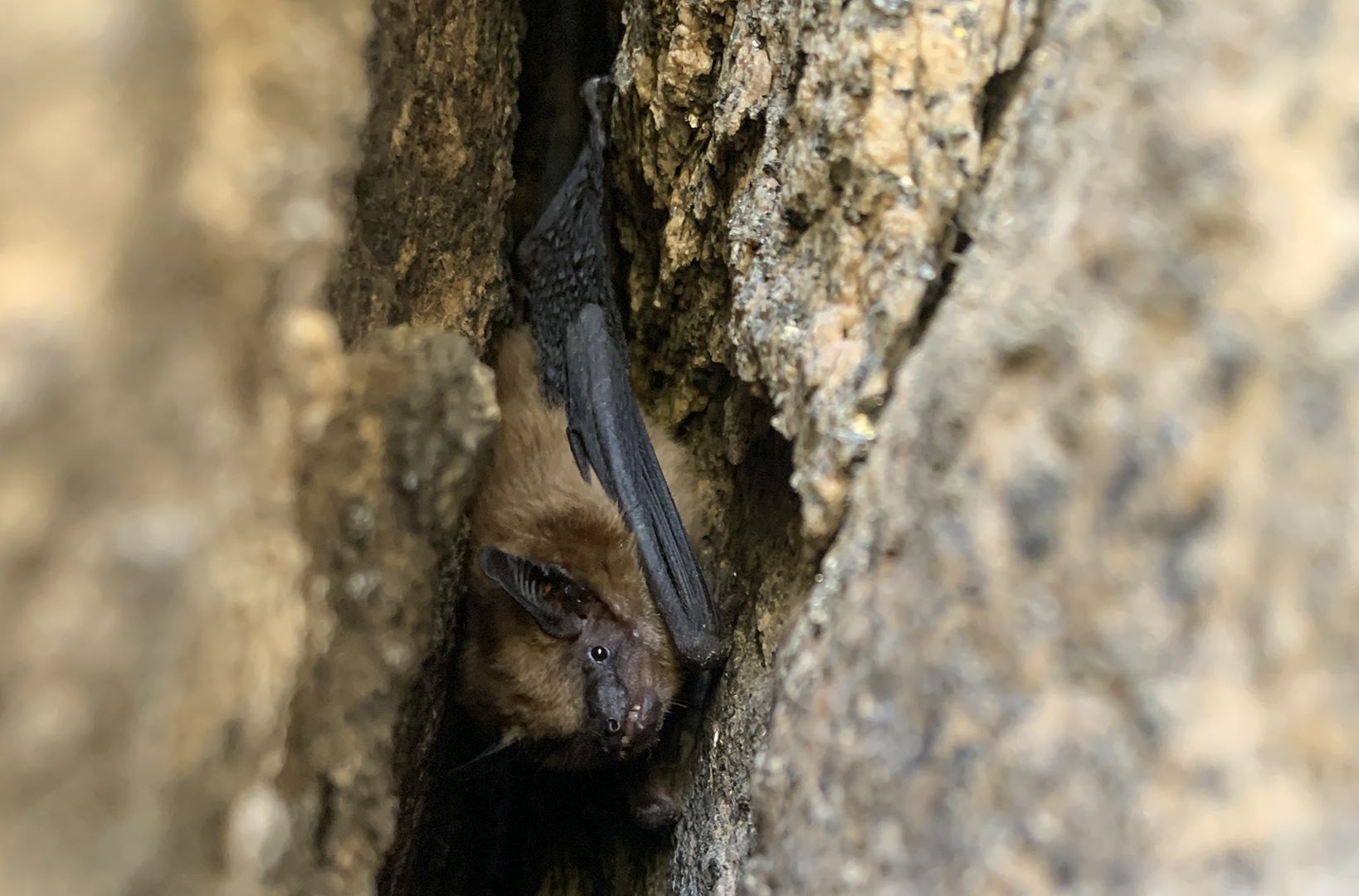
Big brown bat (Eptesicus fuscus) in rock roost. Photo by Sean Smith/NPS
There are 17 species of bat in Yosemite, with 15 of those roosting on rock crevices — including El Capitan. Conservancy donor-supported research led by Joslin aims to improve knowledge of bat distribution. It also will help us understand the spread and severity of white-nose syndrome (WNS), a disease decimating bat populations throughout North America. Given the devastating impacts of WNS on bats, Joslin says: “It’s not a matter of if it comes to Yosemite; it’s a matter of when. We are trying to understand fundamental aspects of basic ecology on cliffs before we see the effects of white-nose syndrome.”
The sheer scale of Yosemite, combined with the relatively furtive roosts of bats, is a challenge for a small team to survey. Smith regularly attends “Climbers’ Coffee” to engage the climbing community in essential conversations about citizen science. Smith speaks with climbers about the importance of reporting bat roosts, and works to demystify negative stigmas surrounding bats by educating people about their importance in our ecosystems. This season, Smith spoke with climbers about the importance of protecting peregrines and climbing closures associated with their nesting sites. Outreach to the public is critical for peregrine protection and stewardship. And it isn’t just fauna that is discussed — climbers are uniquely positioned to inform researchers about flora they have identified along their routes.
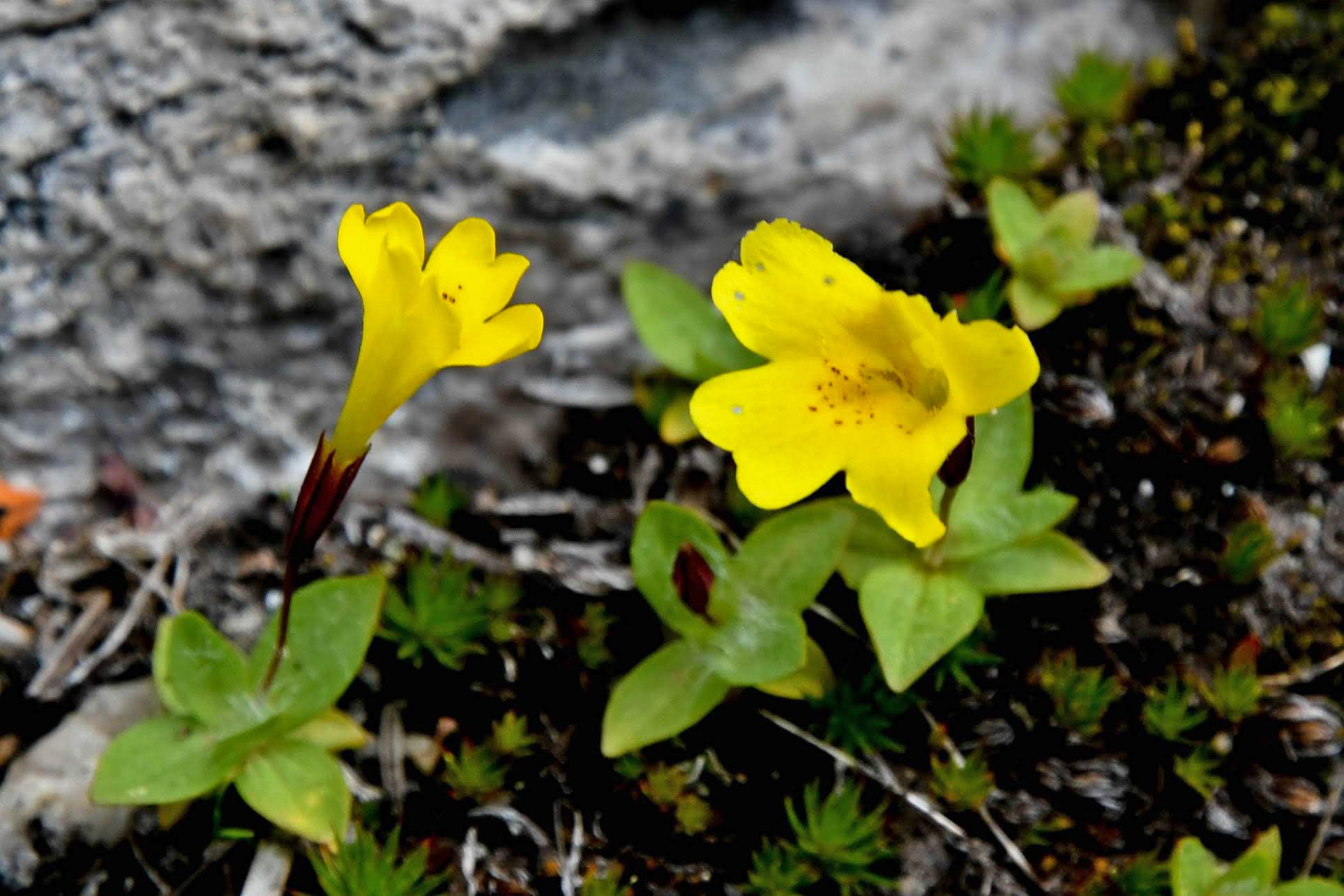
A flash of sunshine-yellow monkeyflower brightens up the granite. Image: Fred Turner
Magnificent monkeyflowers
Big walls are frontiers of scientific discovery, and El Capitan provides an unparalleled opportunity to document plant diversity, adaptation, and reproduction in this extreme environment for the first time. While National Park Service (NPS) climbing rangers have supported both bat and bird research projects, it is only in recent years that their fieldwork has pivoted to include botany.
Thanks to a partnership among NPS, Tulane University, and University of California, Merced — with support from Yosemite Conservancy donors — the first survey of plant biodiversity on El Capitan was undertaken in 2022, with a particular focus on monkeyflowers. The researchers collected seeds from six populations in Yosemite to study seed dispersal and reproduction patterns across cliff and non-cliff populations to understand not only which species are present, but also whether the elevation of their extreme topography affects their adaptation.
Initially identified on El Capitan by park restoration ecologist Erin Dickman, monkeyflower in the Sierra is abundant and remarkably robust, given where it is found. “Monkeyflowers offer endless answers to whatever ecological and evolutionary questions we want to throw at them”, lead researcher Jason Sexton says. “They occur in myriad environments in myriad forms and thus teach us so much about how life adapts.”
Researcher Diana Tataru, a keen climber herself, has found some fascinating adaptations of the species in Yosemite.
“I found three different species of monkeyflower on El Capitan,” Tataru says. “It looks like some of them might be hybridizing, meaning some of the plants we’re seeing have traits from two different species.”
This hybridization indicates a possible mechanism for gene flow down the vertical ecosystem, which helps form a more detailed picture of how flora has adapted to survive in this unlikely environment. “Whenever you observe organisms and populations persisting in such an intense and harsh environment, it’s not an accident,” Tataru says. “They have adapted to be there.”
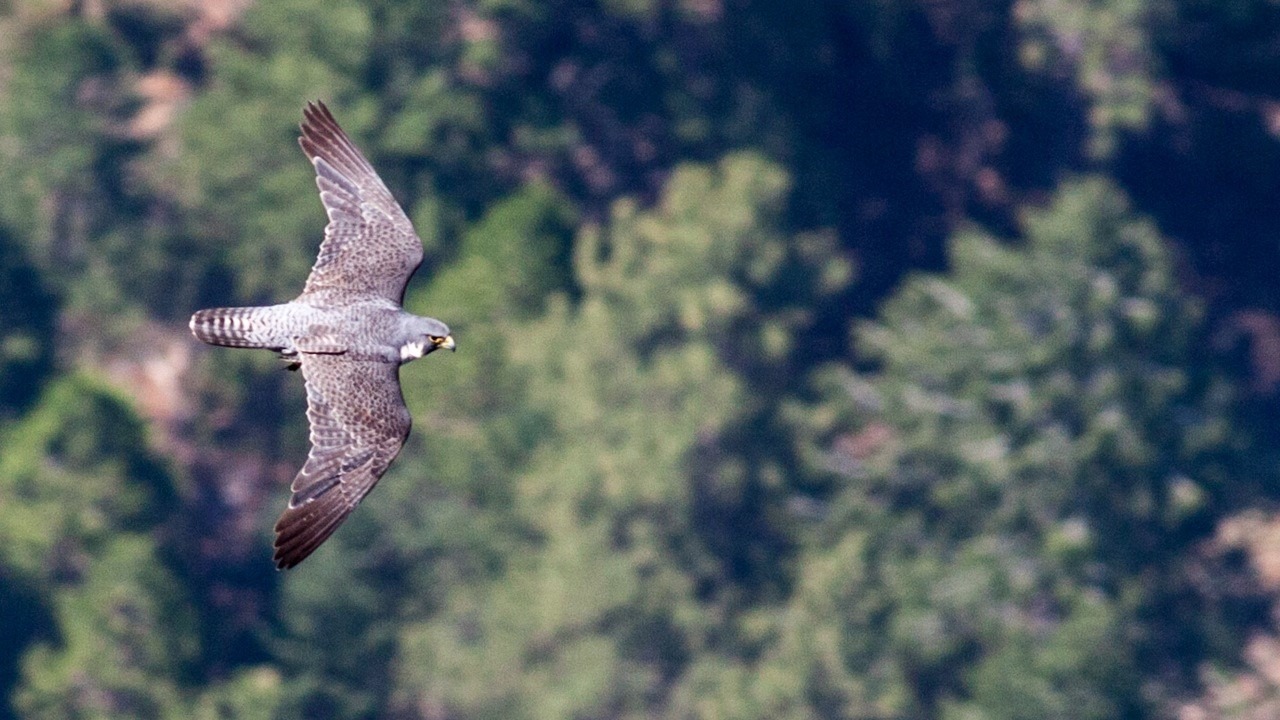
Adult peregrine falcon in flight near the south west face of El Capitan. Image: Ben Ditto
The return of peregrines
Before the mid-20th century, there were more than 3,800 adult peregrine pairs in the United States. That number started to plummet in the 1950s; by 1974, only 324 pairs remained, with zero nesting pairs in Yosemite. The culprit? The pesticide dichloro-diphenyl-trichloroethane (DDT). Insects ingested DDT; small birds ingested insects; and falcons ingested small birds, swallowing a concentrated toxin that made eggshells so dangerously fragile that adult peregrines would accidentally crush their eggs.
Thanks to a nationwide ban on DDT and concerted rehabilitation efforts, peregrines have made a comeback. A 2006 survey estimated that populations in the U.S. had rebounded to at least 3,000 pairs. In Yosemite, most peregrine work is now done long-distance using optics and vantage points. For decades, climbers and wildlife managers have worked together to help peregrines thrive on Yosemite’s walls.
Thanks to their ongoing efforts — and over 30 years of donor support — visitors have the chance to see a success story in action: a falcon saved from extinction, gliding and diving above the Valley. “I am privileged to support the comeback of the majestic peregrine falcon in Yosemite National Park,” Conservancy donor Barbara Coulter says. “It is especially heartening that the temporary closing of climbing routes near their nests has been a special cooperative effort for their benefit that could be an example for other conservation issues.”
None of this work could be undertaken without a strong community of both climbers and researchers. Teams naturally collect data for multiple projects and studies while they are scaling El Capitan. “Throughout the whole summer, patrols are sending pictures to me,” Tataru says. “It’s very much a community effort. People are always so floored to know there’s life up there. It’s cool to share that with them.”
Thanks to donor support, Yosemite Conservancy is able to fund research into Bat Habitat and White-Nose Syndrome, Peregrine Falcon Protection, and Big Wall Plants.

